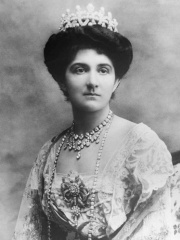
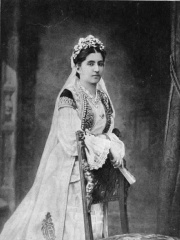
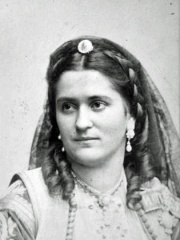
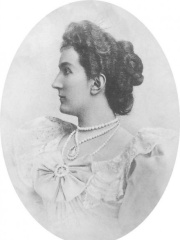
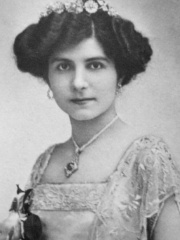
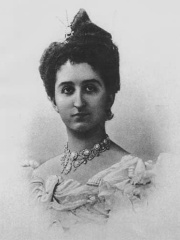
The Most Famous
COMPANIONS from Montenegro
This page contains a list of the greatest Montenegrin Companions. The pantheon dataset contains 784 Companions, 7 of which were born in Montenegro. This makes Montenegro the birth place of the 20th most number of Companions behind India, and Greece.
Top 7
The following people are considered by Pantheon to be the most legendary Montenegrin Companions of all time. This list of famous Montenegrin Companions is sorted by HPI (Historical Popularity Index), a metric that aggregates information on a biography's online popularity.

1. Elena of Montenegro (1871 - 1952)
With an HPI of 72.19, Elena of Montenegro is the most famous Montenegrin Companion. Her biography has been translated into 41 different languages on wikipedia.
Elena of Montenegro (Serbian: Јелена Петровић Његош / Jelena Petrović Njegoš; 8 January 1873 – 28 November 1952) was Queen of Italy from 29 July 1900 until 9 May 1946 as the wife of King Victor Emmanuel III. As Victor Emmanuel's wife, she briefly claimed the titles Empress of Ethiopia and Queen of the Albanians; both titles were dropped when her husband formally renounced them in 1943. Elena was the daughter of King Nicholas I and Queen Milena of Montenegro. With the opening of her beatification process in 2001, she was titled Servant of God.

2. Princess Zorka of Montenegro (1864 - 1890)
With an HPI of 67.75, Princess Zorka of Montenegro is the 2nd most famous Montenegrin Companion. Her biography has been translated into 27 different languages.
Princess Zorka Karađorđević (Serbian Cyrillic: Кнегиња црногорска Зорка; 23 December [O.S. 11 December] 1864 – 16 March [O.S. 4 March] 1890), born Princess Ljubica of Montenegro, was the eldest child of Prince Nicholas I and Princess Milena of Montenegro, who later became the country's king and queen consort. In 1883, Ljubica married Prince Peter Karađorđević and she changed her name to Zorka (and her surname to Karađorđević). She died in childbirth while giving birth to Prince Andrija on 16 March 1890. Prince Andrija died shortly thereafter. Zorka's husband later became king of Serbia as Peter I.

3. Milena Vukotić (1848 - 1923)
With an HPI of 67.58, Milena Vukotić is the 3rd most famous Montenegrin Companion. Her biography has been translated into 24 different languages.
Milena Petrović-Njegoš (née Vukotić; Serbian Cyrillic: Милена Петровић-Његош; 4 May 1847 – 16 March 1923) was the only Queen of Montenegro by marriage to Nicholas I of Montenegro. Milena was regent of Montenegro during the absence of her spouse in 1869 and in 1883. She also served as titular regent for the king-in-exile, Michael, Prince of Montenegro, from 1922 to 1923.

4. Princess Milica of Montenegro (1866 - 1951)
With an HPI of 66.87, Princess Milica of Montenegro is the 4th most famous Montenegrin Companion. Her biography has been translated into 27 different languages.
Princess Milica Petrović-Njegoš of Montenegro, also known as Grand Duchess Militza Nikolaevna of Russia, (14 July 1866 – 5 September 1951) was a Montenegrin princess. She was the second eldest daughter of King Nicholas I Petrović-Njegoš of Montenegro and his wife, Queen Milena. Milica was the wife of Grand Duke Peter Nikolaevich of Russia, the younger brother of Grand Duke Nicholas Nikolaevich of Russia, whose wife was Milica's sister, Princess Anastasia.
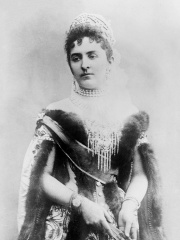
5. Princess Anastasia of Montenegro (1868 - 1935)
With an HPI of 65.59, Princess Anastasia of Montenegro is the 5th most famous Montenegrin Companion. Her biography has been translated into 23 different languages.
Princess Anastasia Petrović-Njegoš of Montenegro (4 January [O.S. 23 December 1867] 1868 – 25 November 1935) was the daughter of King Nicholas I of Montenegro (1841–1921) and his wife, Queen Milena (1847–1923). Through her second marriage, she became Grand Duchess Anastasia Nikolaevna Romanova of Russia. She and her sister "Militza" (Princess Milica), having married Russian royal brothers, were known colloquially as the "Montenegrin princesses" or the "Black peril" during the last days of Imperial Russia, and may have contributed to its downfall by the introduction of Grigori Rasputin to the Empress Alexandra.

6. Princess Helen of Serbia (1884 - 1962)
With an HPI of 65.57, Princess Helen of Serbia is the 6th most famous Montenegrin Companion. Her biography has been translated into 27 different languages.
Princess Helen of Serbia (4 November [O.S. 23 October] 1884 – 16 October 1962) was a Serbian princess. She was the daughter of King Peter I of Serbia and his wife, the former Princess Ljubica of Montenegro. She was the elder sister of George, Crown Prince of Serbia and King Alexander I of Yugoslavia. Helen was also a niece of Queen Elena of Italy, Princess Anastasia of Montenegro (or "Stana"), wife of Grand Duke Nicholas Nikolaevich of Russia and of Princess Milica of Montenegro, wife of Grand Duke Peter Nikolaevich of Russia, the women who introduced Grigori Rasputin to Tsarina Alexandra.

7. Princess Anna of Montenegro (1874 - 1971)
With an HPI of 61.81, Princess Anna of Montenegro is the 7th most famous Montenegrin Companion. Her biography has been translated into 20 different languages.
Princess Anna of Montenegro (18 August 1874 – 22 April 1971) was the seventh child and sixth daughter of King Nicholas I of Montenegro by his wife and consort, Queen Milena.
People
Pantheon has 7 people classified as Montenegrin companions born between 1848 and 1884. Of these 7, none of them are still alive today. The most famous deceased Montenegrin companions include Elena of Montenegro, Princess Zorka of Montenegro, and Milena Vukotić.
Deceased Montenegrin Companions
Go to all RankingsElena of Montenegro
1871 - 1952
HPI: 72.19
Princess Zorka of Montenegro
1864 - 1890
HPI: 67.75
Milena Vukotić
1848 - 1923
HPI: 67.58
Princess Milica of Montenegro
1866 - 1951
HPI: 66.87
Princess Anastasia of Montenegro
1868 - 1935
HPI: 65.59
Princess Helen of Serbia
1884 - 1962
HPI: 65.57
Princess Anna of Montenegro
1874 - 1971
HPI: 61.81
Overlapping Lives
Which Companions were alive at the same time? This visualization shows the lifespans of the 7 most globally memorable Companions since 1700.

